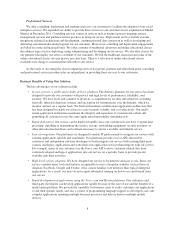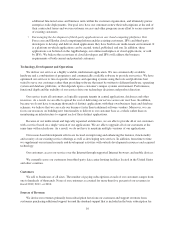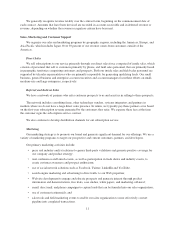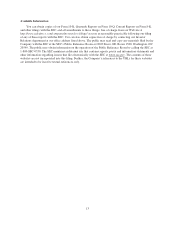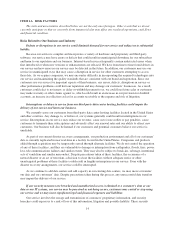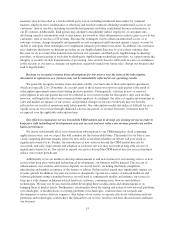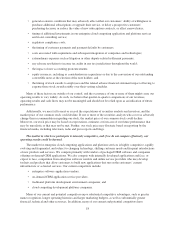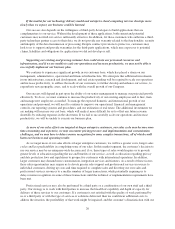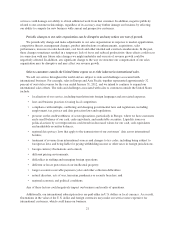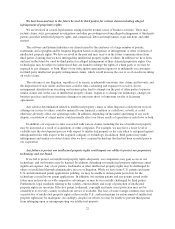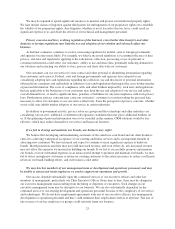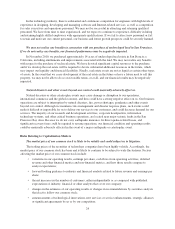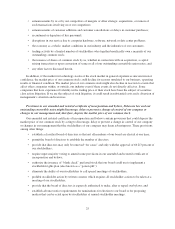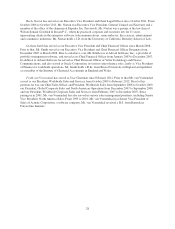Salesforce.com 2012 Annual Report Download - page 22
Download and view the complete annual report
Please find page 22 of the 2012 Salesforce.com annual report below. You can navigate through the pages in the report by either clicking on the pages listed below, or by using the keyword search tool below to find specific information within the annual report.• general economic conditions that may adversely affect either our customers’ ability or willingness to
purchase additional subscriptions or upgrade their service, or delay a prospective customers’
purchasing decision, or reduce the value of new subscription contracts, or affect renewal rates;
• timing of additional investments in our enterprise cloud computing application and platform services
and in our consulting service;
• regulatory compliance costs;
• the timing of customer payments and payment defaults by customers;
• costs associated with acquisitions and subsequent integration of companies and technologies;
• extraordinary expenses such as litigation or other dispute-related settlement payments;
• any adverse resolution to income tax audits in any tax jurisdictions throughout the world;
• the impact of new accounting pronouncements;
• equity issuances, including as consideration in acquisitions or due to the conversion of our outstanding
convertible notes at the election of the note holders; and
• the timing of stock awards to employees and the related adverse financial statement impact of having to
expense those stock awards ratably over their vesting schedules.
Many of these factors are outside of our control, and the occurrence of one or more of them might cause our
operating results to vary widely. As such, we believe that quarter-to-quarter comparisons of our revenues,
operating results and cash flows may not be meaningful and should not be relied upon as an indication of future
performance.
Additionally, we may fail to meet or exceed the expectations of securities analysts and investors, and the
market price of our common stock could decline. If one or more of the securities analysts who cover us adversely
change their recommendation regarding our stock, the market price of our common stock could decline.
Moreover, our stock price may be based on expectations, estimates or forecasts of our future performance that
may be unrealistic or that may not be met. Further, our stock price may fluctuate based on reporting by the
financial media, including television, radio and press reports and blogs.
The market in which we participate is intensely competitive, and if we do not compete effectively, our
operating results could be harmed.
The market for enterprise cloud computing applications and platform services is highly competitive, rapidly
evolving and fragmented, and subject to changing technology, shifting customer needs and frequent introductions
of new products and services. We compete primarily with vendors of packaged CRM software and companies
offering on-demand CRM applications. We also compete with internally developed applications and face, or
expect to face, competition from enterprise software vendors and online service providers who may develop
toolsets and products that allow customers to build new applications that run on the customers’ current
infrastructure or as hosted services. Our current competitors include:
• enterprise software application vendors;
• on-demand CRM application service providers;
• traditional platform development environment companies; and
• cloud computing development platform companies.
Many of our current and potential competitors enjoy substantial competitive advantages, such as greater
name recognition, longer operating histories and larger marketing budgets, as well as substantially greater
financial, technical and other resources. In addition, many of our current and potential competitors have
18


